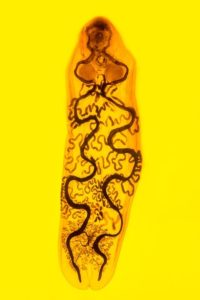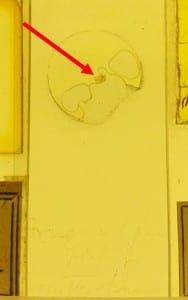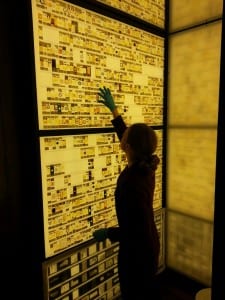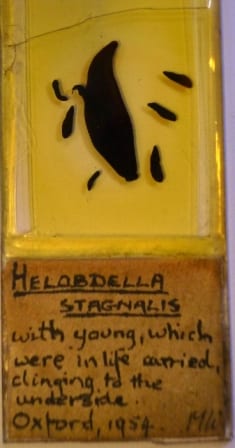From the Micrarium: Isoparorchis, a parasite of an Australian catfish species locally endangered in the Murray-Darling Basin.
By ucwehlc, on 22 May 2023
Even though the Grant Museum is closed this summer, we still have plenty of exciting stories to tell from the collection!
Today’s blog is by visiting researcher Dr Andrew McCarthy from Canterbury College, UK.
The Micrarium at the Grant Museum of Zoology is a beautiful and unique display of illuminated glass microscope slides of specimens from a bewildering range of groups within the Animal Kingdom. Each slide has its own story and potentially its own contribution to make to the study of zoology. The specimen on one such slide is probably at present better known than the rest due to its appearance in Jack Ashby’s excellent book “Animal Kingdom: A Natural History in 100 Objects” based on specimens from the Grant Museum. The specimen of a trematode parasite in the genus Isoparorchis appears in the book as a photogenic example of a parasitic flatworm in a concise overview of the group.
 Close
Close






 Whilst you and I both work as hard as an ant running uphill carrying a dead fly three times its size at our jobs all day every day (right?), sometimes you can’t help but feel a little less Gandalf the Grey and a little more Freena the elf (remember him? Exactly.), than you may otherwise desire.
Whilst you and I both work as hard as an ant running uphill carrying a dead fly three times its size at our jobs all day every day (right?), sometimes you can’t help but feel a little less Gandalf the Grey and a little more Freena the elf (remember him? Exactly.), than you may otherwise desire. Here at the Grant Museum we’re not afraid to try something big or something new. This time we’re doing just that with something small and something old, with a topic which has traditionally been problematic for natural history museums.
Here at the Grant Museum we’re not afraid to try something big or something new. This time we’re doing just that with something small and something old, with a topic which has traditionally been problematic for natural history museums.